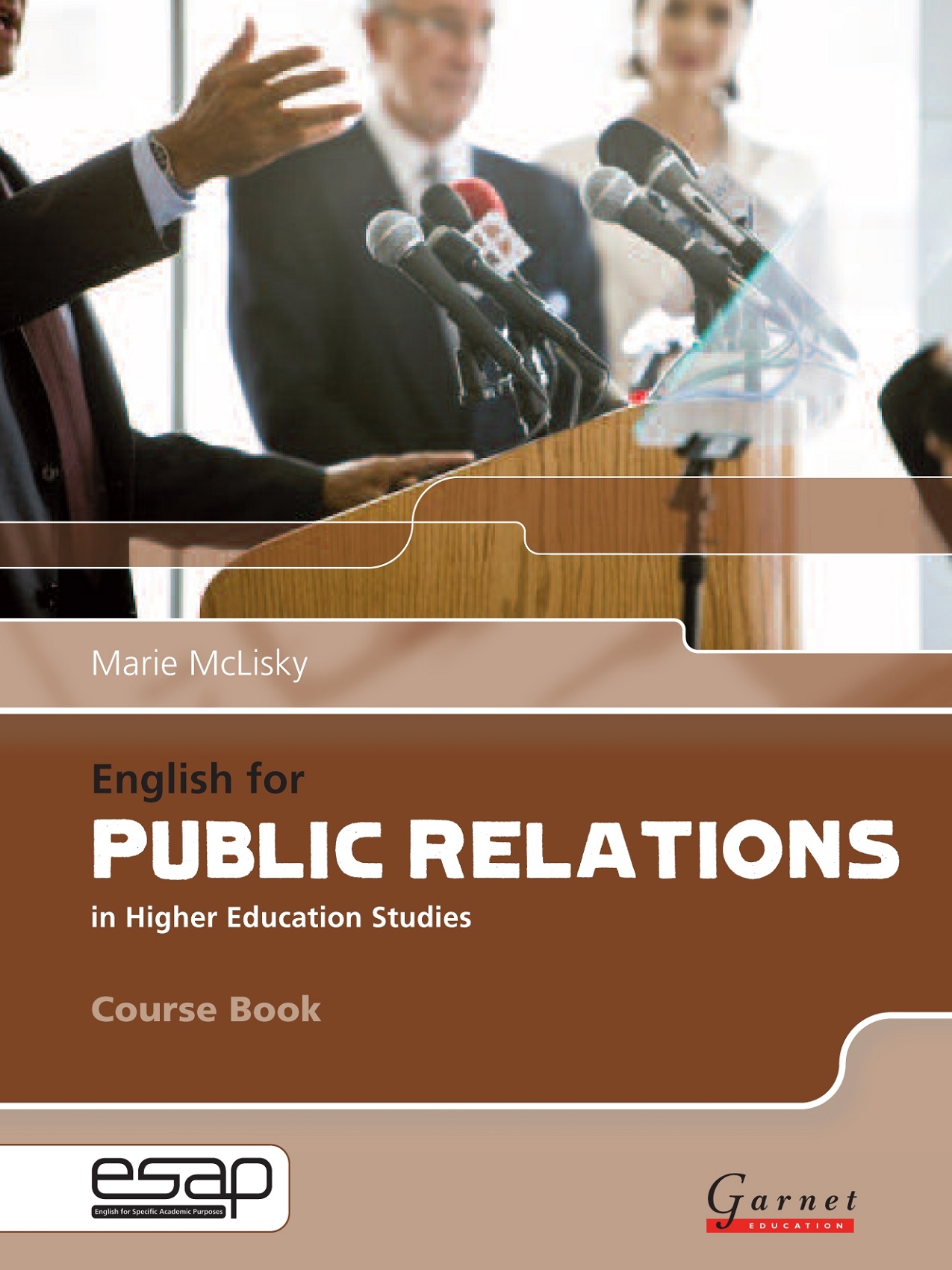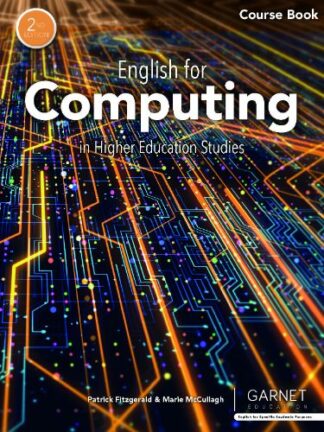Publisher: Garnet Education
Level: Upper intermediate to proficiency
CEF: B2 to C2
IELTS: 5.0 to 7.5+
[tabs style=”default”] [tab title=”Student’s Book “]
English for Public Relations is a skills-based course designed specifically for students of public relations who are about to enter English-medium tertiary level studies. It provides carefully graded practice and progressions in the key academic skills that all students need, such as listening to lectures and speaking in seminars. It also equips students with the specialist language they need to participate successfully within a public relations department. Extensive listening exercises come from public relations lectures, and all reading texts are taken from the same field of study. There is also a focus throughout on the key public relations vocabulary that students will need.
-
- Listening: how to understand and take effective notes on extended lectures, including how to follow the argument and identify the speaker’s point of view.
-
- Speaking: how to participate effectively in a variety of realistic situations, from seminars to presentations, including how to develop an argument and use stance markers.
-
- Reading: how to understand a wide range of texts, from academic textbooks to Internet articles, including how to analyze complex sentences and identify such things as the writer’s stance.
-
- Writing: how to produce coherent and well-structured assignments, including such skills as paraphrasing and the use of the appropriate academic phrases.
-
- Vocabulary: a wide range of activities to develop students’ knowledge and use of key vocabulary, both in the field of public relations and of academic study in general.
-
- Vocabulary and Skills banks: a reference source to provide students with revision of the key words and phrases and skills presented in each unit.
-
- Full transcripts of all listening exercises.
The Garnet English for Specific Academic Purposes series covers a range of academic subjects. All titles present the same skills and vocabulary points. Teachers can therefore deal with a range of ESAP courses at the same time, knowing that each subject title will focus on the same key skills and follow the same structure.
Key Features
-
- Systematic approach to developing academic skills through relevant content.
-
- Focus on receptive skills (reading and listening) to activate productive skills (writing and speaking) in subject area.
-
- Eight-page units combine language and academic skills teaching.
-
- Vocabulary and academic skills bank in each unit for reference and revision.
-
- Audio CDs for further self-study or homework.
-
- Ideal coursework for EAP teachers.
-
- Extra resources at www.garnetesap.com
[/tab]
[tab title=”Teacher’s Book”]
The Teacher’s Book includes:
-
- Comprehensive teaching notes on all exercises to help teachers prepare effective lessons
-
- Complete answer keys to all exercises
-
- Full transcripts of listening exercises
-
- Facsimiles of Course Book pages at the appropriate point in each unit
-
- Photocopiable resource pages and ideas for additional activities
[/tab][tab title=”Contents”]
Contents
Unit 1: What is public relations?
Unit 2: Public relations activities
Unit 3: Public relations research
Unit 4: Careers in public relations
Unit 5: PR for non-profit organizations
Unit 6: Crisis communication
Unit 7: Public relations regulation
Unit 8: Public relations and marketing
Unit 9: Public relations for corporate responsibility
Unit 10: Financial public relations
Unit 11: Current issues in public relations
Unit 12: Strategy and change
[/tab][tab title=”Reviews”]
“After reading this book I think I may have found the Rosetta stone for my ESP teaching in the field of public relations. The quality of the book is unquestionable (the series to which it belongs won the English Speaking Union’s English Language book award in 2009).
The book is aimed at both in-service and pre-service professionals. In fact, due to the basic contents and problem-solving approach of certain sections, this book will prove much more than a language textbook by serving as an ideal tool for CLIL courses. In this sense, it differentiates itself from books of the same type and scope which generally aim at either content or language. The practicality of its exercises and the emphasis on specific language leads to a balance between content and language practice. As I said at the beginning, the book fills a gap that was necessary to cover in current ESP teaching in a globalized world. I am sure that prospective users will find English for Public Relations as valuable a title as I did and will enjoy teaching with it.”
— Jesús García Laborda for TEFL net, September 2012
[/tab][/tabs]





